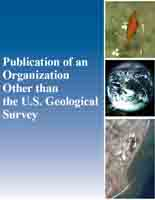A metadata checklist and data formatting guidelines to make eDNA FAIR (Findable, Accessible, Interoperable and Reusable)
Links
- More information: Publisher Index Page (via DOI)
- Open Access Version: Publisher Index Page
- Download citation as: RIS | Dublin Core
Abstract
The success of environmental DNA (eDNA) approaches for species detection has revolutionized biodiversity monitoring and distribution mapping. Targeted eDNA amplification approaches, such as quantitative PCR, have improved our understanding of species distribution, and metabarcoding-based approaches have enabled biodiversity assessment at unprecedented scales and taxonomic resolution. eDNA datasets, however, are often scattered across repositories with inconsistent formats, varying access restrictions, and inadequate metadata; this limits their interoperation, reuse, and overall impact. Adopting FAIR (Findable, Accessible, Interoperable, and Reusable) data practices with eDNA data can transform the monitoring of biodiversity and individual species and support data-driven biodiversity management across broad scales. FAIR practices remain underdeveloped in the eDNA community, partly due to gaps in adapting existing vocabularies, such as Darwin Core (DwC) and Minimum Information about any (x) Sequence (MIxS), to eDNA-specific needs and workflows. To address these challenges, we propose a comprehensive FAIR eDNA (FAIRe) Metadata Checklist, which integrates existing data standards and introduces new terms tailored to eDNA workflows. Metadata are systematically linked to both raw data (e.g., metabarcoding sequences, Ct/Cq values of targeted qPCR assays) and derived biological observations (e.g., Amplicon Sequence Variant (ASV)/Operational Taxonomic Unit (OTU) tables, species presence/absence). Along with formatting guidelines, tools, templates, and example datasets, we introduce a standardized, ready-to-use approach for FAIR eDNA practices. Through broad collaboration, we seek to integrate these guidelines into established biodiversity and molecular data standards, promote journal data policies, and foster user-driven improvements and uptake of FAIR practices among eDNA data producers. In proposing this standardized approach and developing a long-term plan with key databases and data standard organizations, the goal is to enhance accessibility, maximize reuse, and elevate the scientific impact of these valuable biodiversity data resources.
| Publication type | Article |
|---|---|
| Publication Subtype | Journal Article |
| Title | A metadata checklist and data formatting guidelines to make eDNA FAIR (Findable, Accessible, Interoperable and Reusable) |
| Series title | Environmental DNA |
| DOI | 10.1002/edn3.70100 |
| Volume | 7 |
| Issue | 3 |
| Publication Date | June 06, 2025 |
| Year Published | 2025 |
| Language | English |
| Publisher | Wiley |
| Contributing office(s) | Science Analytics and Synthesis |
| Description | e70100, 20 p. |


